 2003 Mitsubishi Lancer Evolution VIII Dimensions, Size & Specs
2003 Mitsubishi Lancer Evolution VIII Dimensions, Size & SpecsMeasurements of the 2003 Mitsubishi Lancer Evolution VIII, engineered for optimal performance and comfort
| Dimensions | |
|---|---|
| Length: | 4490 mm176.8 in14.7 ft |
| Width: | 1770 mm69.7 in5.8 ft |
| Height: | 1450 mm57.1 in4.8 ft |
| Ground Clearance: | 140 mm5.5 in0.5 ft |
| Trunk Capacity: | 430 liter15.2 cu ft |
| Weight Specifications | |
| Curb Weight: | 1320-1445 kg2910-3186 lbs |
| Maximal permitted Weight: | 1885 kg4156 lbs |
| Roof Load: | 60 kg132 lbs |
| Tire Specifications | |
| Rims Size: | 17-inch rims:
|
| Tire Size: |
|
The Mitsubishi Lancer Evolution VIII, produced between 2003 and 2005, is a high-performance sedan that combines aggressive styling with practical dimensions. Measuring 4490 mm (176.8 inches) in length, 1770 mm (69.7 inches) wide, and 1450 mm (57.1 inches) tall, this model offers a balanced footprint suitable for both spirited driving and everyday usability. The curb weight ranges from 1320 to 1445 kg (2,910 to 3,185 lbs), reflecting a solid yet agile build optimized for performance without sacrificing road presence. Maximum permissible weight is 1885 kg (4,156 lbs), ensuring ample capacity for passengers and cargo. Its ground clearance is set at 140 mm (5.5 inches), striking a balance between sporty handling and practical maneuverability over varied road conditions. The Lancer Evolution VIII rides on 17-inch rims sized 8J x 17 and fitted with 235/45 R17 tires, delivering enhanced grip and stability. One of the practical features of this sedan is its luggage capacity of 430 liters (15.2 cubic feet), allowing for reasonable cargo space despite the performance orientation. A roof load rating of 60 kg (132 lbs) accommodates light rooftop storage or equipment when needed. Overall, the Mitsubishi Lancer Evolution VIII remains a legendary model in the Evo lineup, celebrated for its dynamic capabilities, compact yet functional size, and practical features ideal for enthusiasts seeking a performance sedan that does not compromise on everyday usability.
Discover the standout features that make the 2003 Mitsubishi Lancer Evolution VIII a leader in its class
Have a question? Please check our knowledgebase first.
The Mitsubishi Lancer Evolution VIII measures 4490 mm (176.8 inches) in length, 1770 mm (69.7 inches) in width, and stands 1450 mm (57.1 inches) tall. These dimensions give it a compact yet aggressive stance typical of high-performance sedans, allowing for good maneuverability and a sporty presence on the road. Its relatively moderate size also aids in handling tight corners and fitting into urban spaces without sacrificing stability.
The curb weight of the Mitsubishi Lancer Evolution VIII ranges from 1320 to 1445 kg (approximately 2910 to 3185 lbs), depending on specific trims and optional equipment. This relatively lightweight design contributes to the car's agile handling and quick acceleration. A lighter car typically accelerates faster and uses fuel more efficiently, though the Evo VIII's turbocharged engine means its fuel consumption is more performance-oriented compared to standard sedans.
The Lancer Evolution VIII provides a luggage capacity of 430 liters (around 15.2 cubic feet), which is quite generous for a compact performance sedan. This makes it practical enough for everyday activities such as grocery shopping, weekend trips, or carrying sports equipment. The trunk space balances well with the car's sporty intent, offering utility without compromising on its sleek design.
The ground clearance (ride height) of the Mitsubishi Lancer Evolution VIII is 140 mm (5.5 inches). This relatively low clearance aids in improved aerodynamics and enhances handling by lowering the center of gravity. However, it means the car is less suited for rough or uneven terrain and may struggle with obstacles like high curbs or deep potholes, making it best suited for paved roads and performance driving environments.
Yes, the Mitsubishi Lancer Evolution VIII fits comfortably into a standard residential garage. Its length of 4490 mm (176.8 inches) and width of 1770 mm (69.7 inches) are well within typical single-car garage dimensions, which usually accommodate cars up to around 5000 mm (196.8 inches) long and 2500 mm (98.4 inches) wide. Owners should ensure enough clearance for opening doors and maneuvering but can generally park the Evo VIII without spatial concerns.
The Lancer Evolution VIII is equipped with 8J x 17 inch rims fitted with 235/45 R17 tires. These relatively wide tires (235 mm tread width) provide excellent grip and stability during aggressive cornering and acceleration. The 17-inch rim size strikes a balance between sportiness and comfort, enabling responsive handling without overly harsh ride quality. These specifications are typical for performance sedans aiming to maintain control at high speeds.
Compared to the Evolution VII, the Lancer Evolution VIII maintained very similar exterior dimensions with minor tweaks for improved aerodynamics and styling. Both generations measure approximately 4490 mm in length and 1770 mm in width, making changes subtle. Performance upgrades in the Evo VIII include an improved 2.0-liter turbocharged engine for enhanced power delivery and suspension revisions for better handling. Overall, the Evo VIII builds on the VII’s foundation with refinements that sharpen driving dynamics without major changes in size.
The Lancer Evolution VIII competes closely with performance sedans such as the Subaru WRX STI and Mitsubishi's own Evo IX. Dimensionally, it’s compact with a length of 4490 mm (176.8 inches) and width of 1770 mm (69.7 inches), similar to its rivals. Performance-wise, the Evo VIII’s turbocharged 2.0-liter engine and advanced AWD system give it sharp handling and quick acceleration, often making it one of the most driver-focused choices in its category. Its relatively light curb weight from 1320 to 1445 kg (2910 to 3185 lbs) further enhances agility compared to some bulkier competition.
The Mitsubishi Lancer Evolution VIII has a maximum roof load rating of 60 kg (about 132 lbs). This means you can safely install roof racks and carry additional cargo like bicycles, luggage carriers, or sports equipment as long as the total weight on the roof does not exceed this limit. Exceeding 60 kg could compromise vehicle stability and safety. It's important to distribute the load evenly and ensure items are securely fastened when using roof accessories.
The maximum weight, or gross vehicle weight, of the Mitsubishi Lancer Evolution VIII is 1885 kg (approximately 4157 lbs). This includes the car's own curb weight (1320 to 1445 kg) plus passengers, cargo, and fluids. Staying within this weight limit ensures safe handling and braking performance. Overloading beyond this capacity can strain the suspension and drivetrain, reduce fuel efficiency, and increase wear. The limit allows the Evo VIII to carry multiple passengers and luggage, but it's advisable not to overload to maintain optimal performance.
Discover similar sized cars.
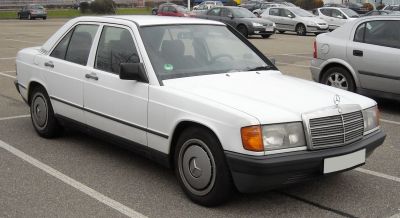
| Production: | 1982-1988 |
|---|---|
| Model Year: | 1982 |
| Length: | 4420-4450 mm174.0-175.2 in |
| Width: | 1678-1706 mm66.1-67.2 in |
| Height: | 1338-1390 mm52.7-54.7 in |

| Production: | 1982-1988 |
|---|---|
| Model Year: | 1983 |
| Length: | 4435-4460 mm174.6-175.6 in |
| Width: | 1690 mm66.5 in |
| Height: | 1369-1395 mm53.9-54.9 in |
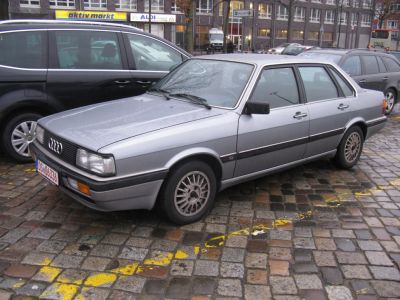
| Production: | 1984-1987 |
|---|---|
| Model Year: | 1984 |
| Length: | 4465 mm175.8 in |
| Width: | 1682 mm66.2 in |
| Height: | 1365-1376 mm53.7-54.2 in |
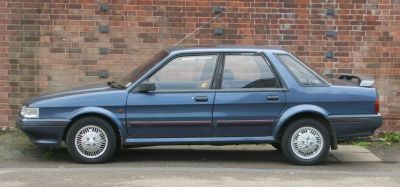
| Production: | 1984-1994 |
|---|---|
| Model Year: | 1984 |
| Length: | 4470 mm176.0 in |
| Width: | 1710 mm67.3 in |
| Height: | 1420 mm55.9 in |
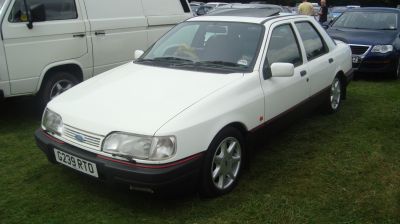
| Production: | 1987-1993 |
|---|---|
| Model Year: | 1987 |
| Length: | 4467 mm175.9 in |
| Width: | 1698 mm66.9 in |
| Height: | 1407 mm55.4 in |
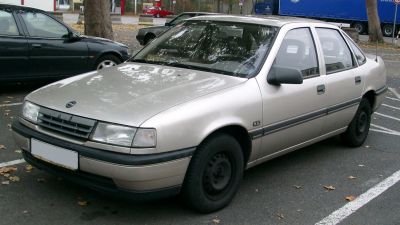
| Production: | 1988-1992 |
|---|---|
| Model Year: | 1988 |
| Length: | 4432 mm174.5 in |
| Width: | 1706 mm67.2 in |
| Height: | 1400 mm55.1 in |
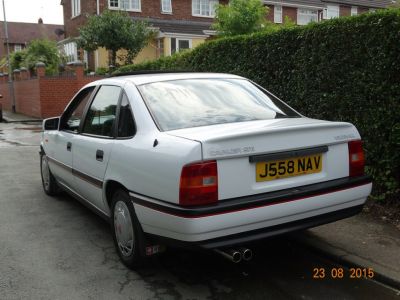
| Production: | 1988-1995 |
|---|---|
| Model Year: | 1988 |
| Length: | 4432 mm174.5 in |
| Width: | 1706 mm67.2 in |
| Height: | 1400 mm55.1 in |
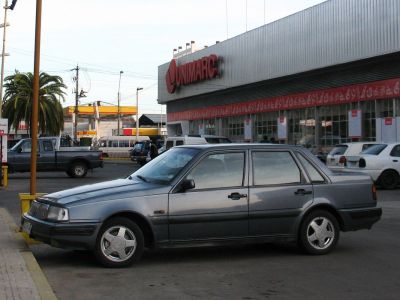
| Production: | 1989-1996 |
|---|---|
| Model Year: | 1989 |
| Length: | 4435 mm174.6 in |
| Width: | 1686 mm66.4 in |
| Height: | 1378 mm54.3 in |
